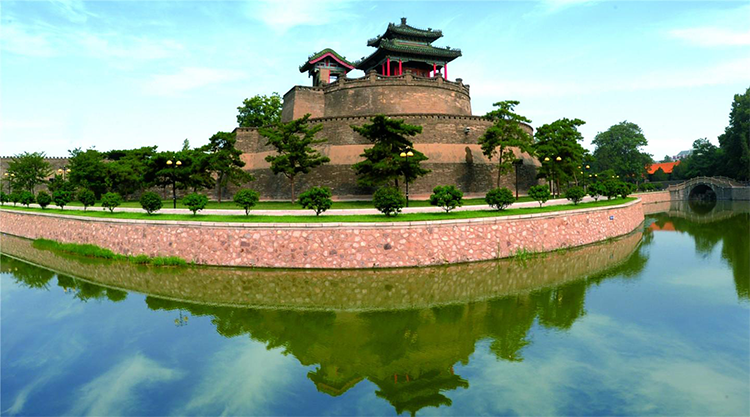Hebei Travel: Discover Wahuang Palace — Nuwa’s Cliffside Temple
Wahuang Palace , tucked into the steep cliffs of Zhonghuang Mountain in She County, Hebei, is one of northern China’s most mysterious and spectacular religious sites. This millennium-old temple complex honors Nuwa—the mythic creator of humankind—and draws architecture lovers, pilgrims, and cultural explorers with its dramatic cliff-hung wooden pavilions, Northern Qi stone sutras, and lively temple fairs.
1. The soul of Wahuang Palace: the cliff-hung “living hall”
The centerpiece, Wahuang Pavilion, dates back to the Northern Qi period (550–577 CE) and has stood for more than 1,400 years. Built into the mountainside, the three-story wooden pavilion is anchored to the cliff by nine massive iron chains. When the wind blows, the pavilion gently sways, giving it the appearance of an “airborne” hall—hence the local name describing it as a ‘living’ suspended temple. This rare construction method is regarded as one of China’s ancient architectural marvels.
Beyond Wahuang Pavilion, the site includes Ming and Qing halls such as Chaoyuan Palace and Tingcan Palace, plus valuable Northern Qi cliff-carved sutras and adjacent grottoes. Together, these remains reveal the centuries-long blending of Buddhist and Daoist traditions, making Wahuang Palace a living cultural museum as well as a religious sanctuary.
2. Myth and devotion: a millennium of Nuwa culture
Local tradition holds that Zhonghuang Mountain is the place where Nuwa shaped humans from earth and mended the heavens with stones. Devotional activity has continued here for centuries. The annual temple fair—especially bustling from the 1st to the 18th day of the third lunar month—attracts hundreds of thousands of visitors and worshippers who come to pray, make offerings, and celebrate. Folk opera, lion dances, and handicraft markets make the fair a vivid way to experience northern Chinese folk customs.
3. Architectural character: cliffside buildings blending Buddhist and Daoist styles
– Wahuang Pavilion: A three-story wooden structure suspended on iron chains, offering panoramic views of the Taihang range and a thrilling sense of elevation.
– Cliff sutra carvings: Northern Qi stone inscriptions include excerpts from the Lotus Sutra and Nirvana Sutra, and represent one of the largest surviving cliff-carved sutra collections in China.
– Ming and Qing halls: Chaoyuan Palace and Tingcan Palace feature red walls, dark tiles, and carved beams and rafters, showcasing the solemn beauty of northern temple design.

4. Cultural experiences: temple fairs, prayers, and stone-carving exploration
– Wahuang Temple Fair (lunar March): Expect lively crowds, traditional performances, local snacks, and ritual ceremonies—an immersive cultural highlight.
– Stone-sutra exploration: The Northern Qi cliff carvings are a treasure for calligraphy and Buddhist-art enthusiasts; allow time for careful study.
– Pilgrimage and wishes: Tie a red prayer ribbon at the pavilion and enjoy sweeping views across the Taihang Mountains.
5. Practical information: planning your Wahuang Palace visit
Location & transport
– Address: Zhonghuang Mountain, She County (Shexian), Handan City, Hebei Province
– Public transport: Take an intercity bus from Handan to She County, then a site shuttle or taxi (about 30 minutes).
– Driving: Navigate to ‘Wahuang Palace Scenic Area’; the park provides parking (approx. RMB 10–20 per day).
Opening hours & tickets
– Hours: 08:00–17:30 (peak season may extend hours)
– Ticket: Around RMB 80 for major sites including Wahuang Pavilion and cliff sutras
Tips
– Best time: spring or autumn to avoid summer heat; the lunar March fair is especially vibrant.
– Wear comfortable walking shoes; there are many steps and some steep paths.
– Payment: cash, WeChat Pay, and Alipay are accepted; small vendors may prefer cash.
– Language: signage at main attractions is often bilingual, but some folk performances and explanations may be in Chinese only.
6. Local recommendations: hidden experiences and avoidances
– Early morning visit: Beat the crowds to enjoy quiet light on the pavilion and unobstructed views.
– Combine local sites: Pair with the Eighth Route Army 129th Division Memorial and Taihang mountain scenery for a cultural day trip.
– Avoid: Overpriced souvenir stalls during the fair—shop mindfully and compare prices.

Conclusion: a thousand-year cultural pilgrimage
Wahuang Palace is more than an architectural wonder: it’s a living chapter of Chinese civilization, where myth, religion, and craftsmanship converge. Whether you are drawn by ancient building techniques, religious tradition, or dynamic local festivals, this cliffside sanctuary on Zhonghuang Mountain offers a rare and memorable encounter with China’s cultural heritage.


